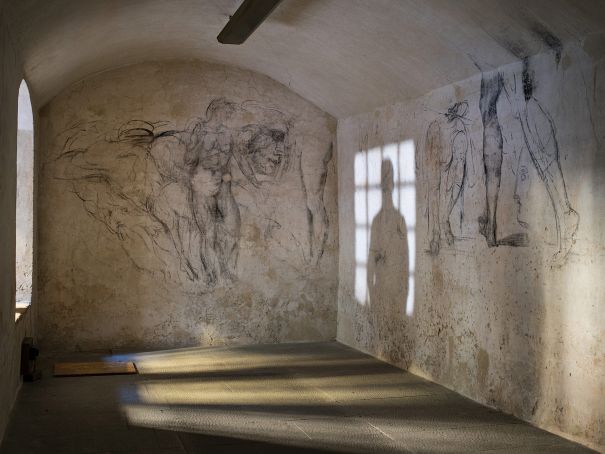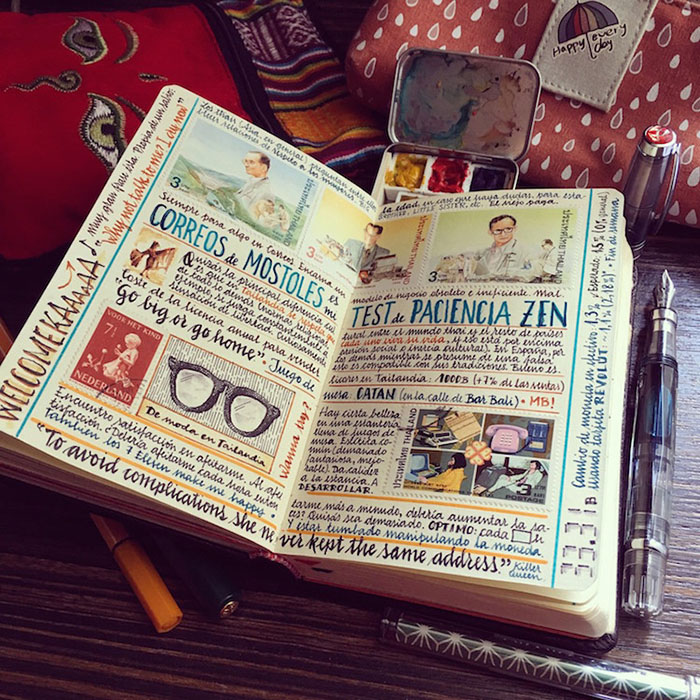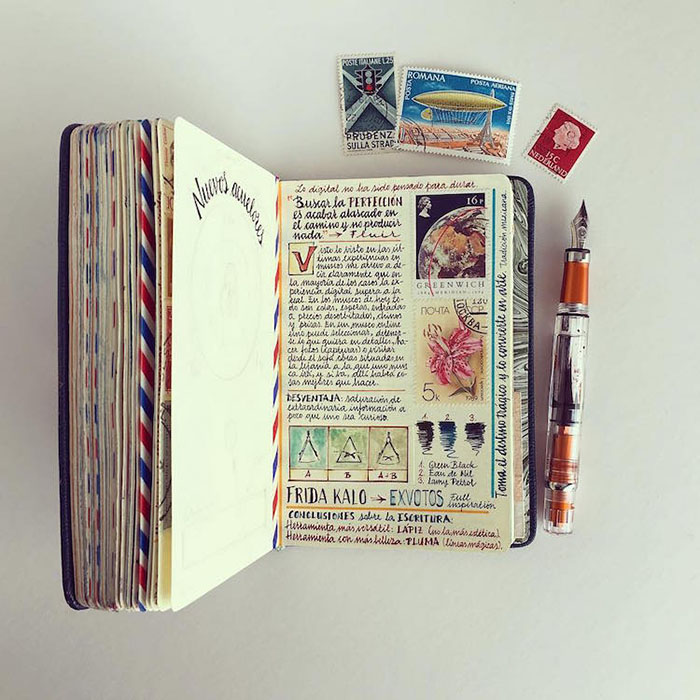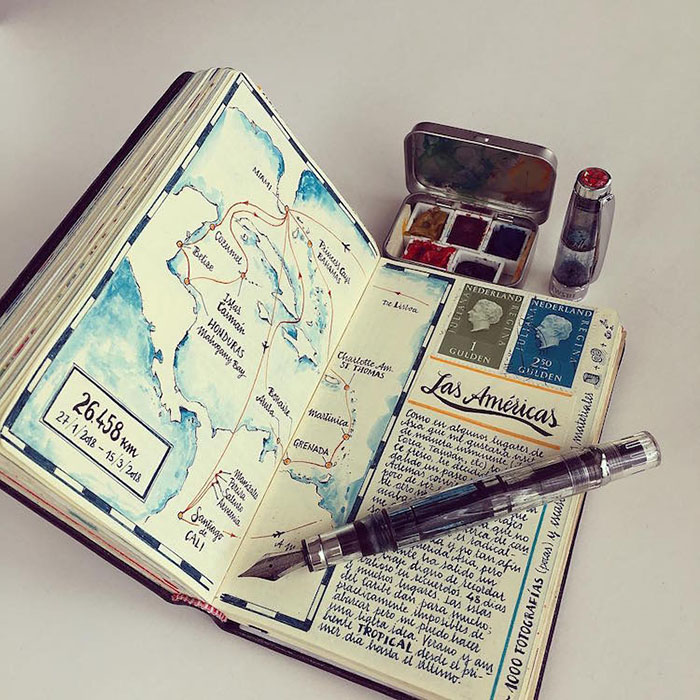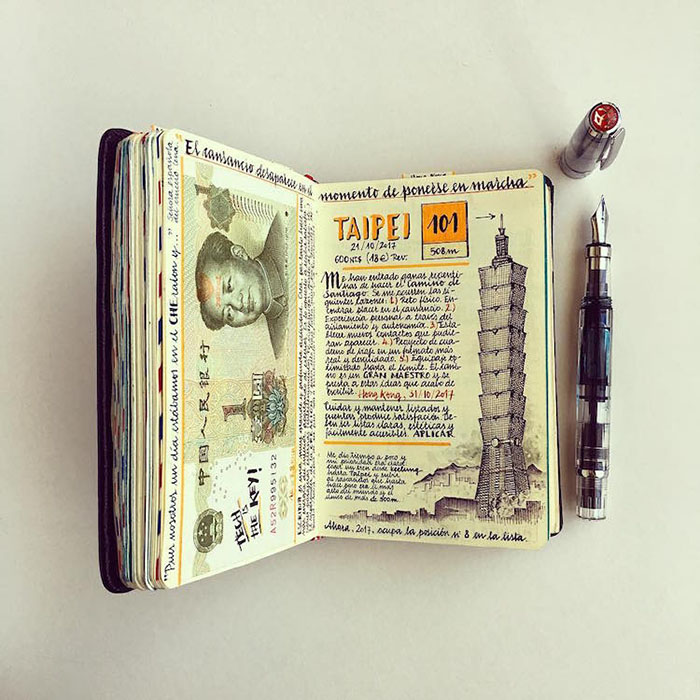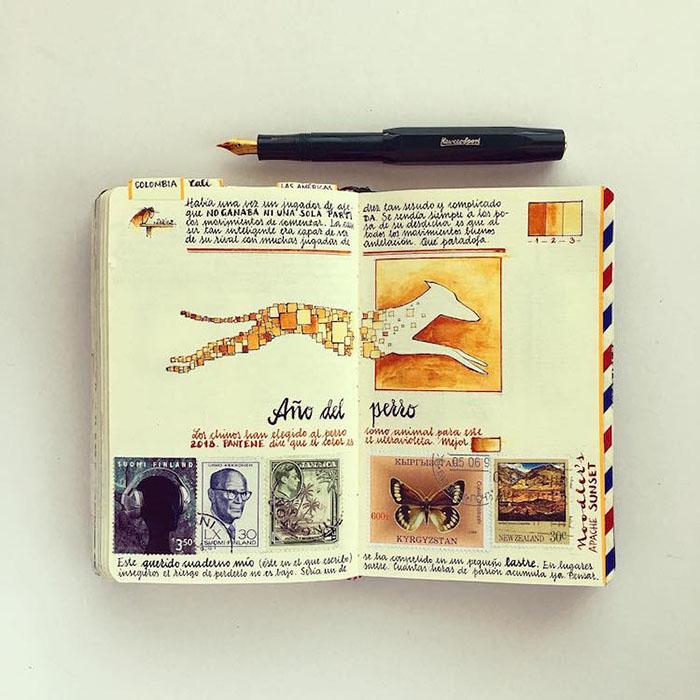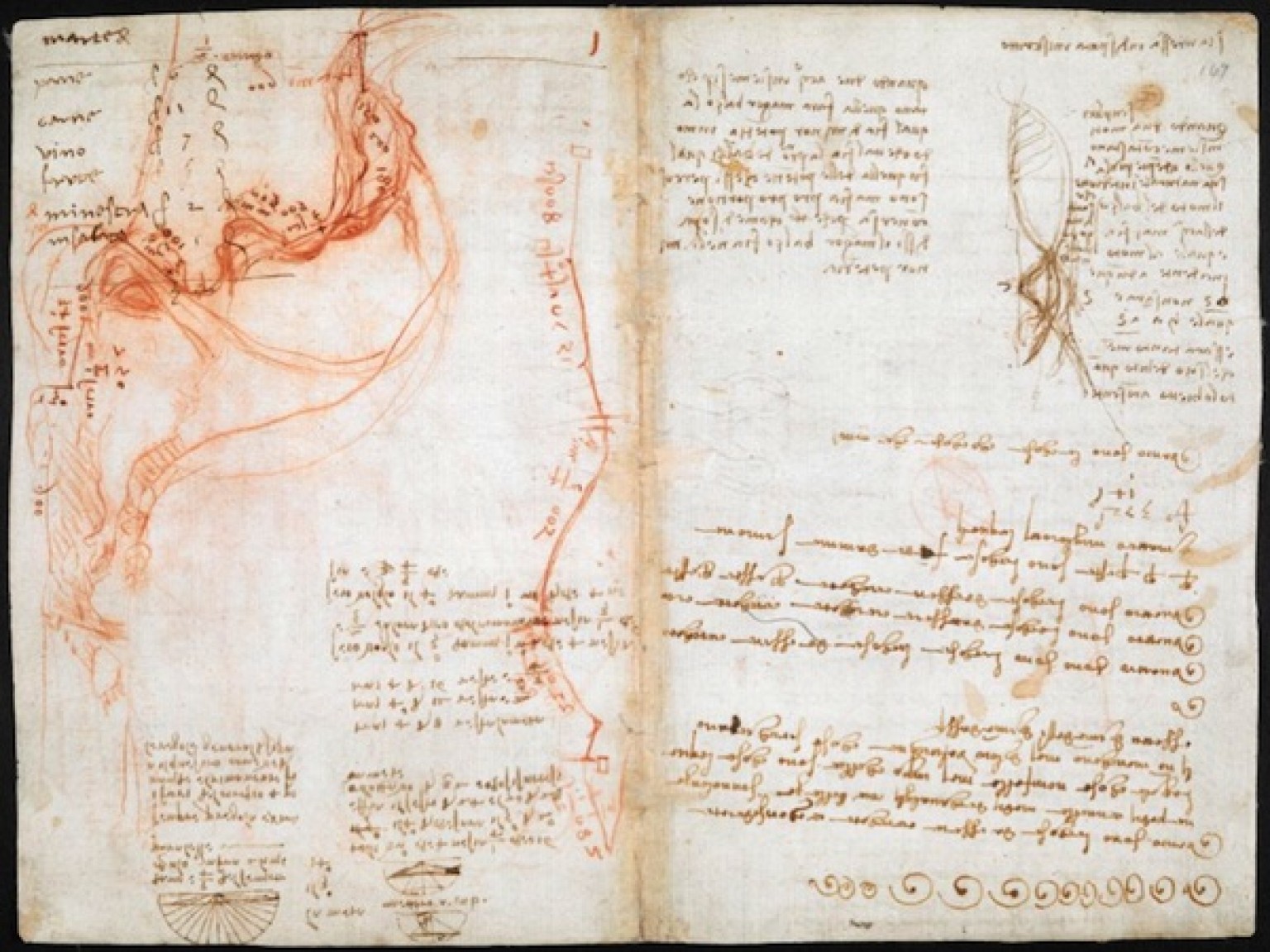Transcript Provided by YouTube:
00:00
From machine guns and helicopters, to 15th century tanks, Leonardo da Vinci
00:04
created and designed of a lot of things in his life but you might be surprised
00:08
with how just ahead of time this Italian native really was. Stay tuned to number
00:13
one to see which of his 15th century inventions you use every day!
00:29
Number 10: The First Machine Gun.
00:32
In school, most of us learned that da Vinci
00:36
was a painter, a composer, and a man of the arts. We’re here to tell you today
00:41
that good old Leonardo might actually have been a good deal more hardcore than
00:44
you might think! While he’s still the same man who painted classics such as
00:49
Mona Lisa and the most famous depiction of the Last Supper, da Vinci also
00:53
invented what some considered being the first machine gun. To make this feat even
00:58
more impressive, he did this in a century where people were really unsure as to
01:03
what gunpowder’s place might be in the future of warfare. The reason that
01:08
gunpowder didn’t really take off until a few centuries later is simple no one had
01:13
figured out how to make it safe and reliable for use in the 1400s. Cannons
01:18
were big and heavy things that took ages to reload,
01:20
they just weren’t all that practical. Da Vinci wasn’t having such arbitrary
01:25
limitations in his own inventions, however. His triple barrel cannon was
01:30
lightweight and mounted on a carriage for easy transport. The groundbreaking
01:34
weapon could also be reloaded from the front rather easily. Did we mention it
01:38
had three barrels? Well, yep, it did! Making da Vinci the inventor the closest
01:44
thing to the world’s first machine gun. You know that you’re doing something
01:48
right when it takes the rest of the world around 500 years to catch up to
01:52
you!
01:54
Number 9: A Portable Bridge.
01:57
Back in da Vinci’s day, warfare included a lot of
02:01
walking. Soldiers didn’t have the luxury of being transported by train, or car, or
02:06
plane. No, they had to rely on their own two feet and animals that they could
02:11
train. Having to get everywhere on the “heel/toe express” really made the issue
02:17
of rivers and waterways a problem for ancient armies. No company of soldiers
02:21
likes being wet, after all. In Leo’s time, typical warfare involved a lot of city
02:26
and castle sieging, and what do castles have? Moats! Which are a big enough problem all
02:32
on their own. We already told you that da Vinci was a military engineer, as well as
02:37
an artist. Well when it came to his military designs…Leonardo was
02:40
for valuing efficiency. It’s no surprise, then, that he would tackle the problem of
02:45
soldiers having to walk through every bit of water that was stuck in their way.
02:49
To solve for this the inventor did no less than create a wheeled, portable, and
02:55
revolving bridge that armies could drag along behind them. In his personal notes,
02:59
Leonardo described this invention of his bridge as “light, yet rugged.” We bet the
03:05
soldiers that got to use the bridge loved him for this one, since it meant no
03:09
more wet uniforms or rusty swords for them!
03:13
Number 8: A Giant Horse.
03:17
Among one of his many sculpting projects, da Vinci was hired by one of his patrons to
03:21
create a 24 foot tall horse. The Duke of Milan funded this project, even despite
03:27
it requiring an exorbitantly expensive amount of bronze. There was so much
03:32
material that needed to be applied to the sculpture that Leonardo was forced to
03:35
create a new casting technique to make sure that the horse’s bronze shell would
03:39
be immune to cracks or faults. Unfortunately, the Duke of Milan was put
03:44
in a tight spot when the King of France invaded Italy. The Duke ended up having
03:48
to offer nearly 40 tons of bronze – meant for da Vinci’s sculpture – to the invading
03:53
monarch as a bribe. Leonardo was somewhat upset about not being able to complete
03:58
his final project and died never being able to complete it. Luckily, though, it
04:02
does have a happy ending. Leonardo’s horse was later completed, and the man
04:06
who had done so donated the sculpture to da Vinci’s birth country of Italy!
04:12
Number 7: A Robot Knight.
04:14
A good number of da Vinci’s designs included the use of
04:18
ropes and pulleys, but none more so than the robotic Knight that he created for
04:23
the pageant in Milan. The robot was designed without a single unneeded part
04:28
and could sit down, stand up, and even raise its visor! Leonardo’s designs were
04:34
so finely formulated that some of NASA’s robots are designed after his work on
04:38
the robotic Knight. And we thought his invention of the machine gun was impressive!
04:44
Number 6: The Parachute.
04:48
Da Vinci isn’t actually credited with the invention of the parachute, but he was definitely one
04:52
of the first men to ever think of it. For years, scientists doubted whether
04:56
Leonardo’s design would actually work, though. This was because, based on the
05:01
inventors notes, Leonardo’s parachute was to be
05:03
constructed a good deal differently than how we create parachutes in the modern
05:07
day. Some researchers are known to have stated that his design would just be too
05:11
heavy, and his shape was too wrong for it to actually work. For the longest time
05:16
there was no proof to argue against these naysayers,
05:18
either. As like with many of his ideas, Leonardo never actually built or tested
05:24
a parachute himself. Still, the great inventor would be proved right in the
05:28
end. In the year 2000, the world was shocked when a daredevil named Adrian
05:33
Nichols constructed and tested da Vinci’s design for the fun of it. And, to
05:39
everyone’s surprise, Leonardo’s parachute actually worked!
05:43
Nichols even said it felt smoother falling with the ancient design then
05:47
compared to its modern-day counterparts. Now, coming from a man who was so tired
05:51
of modern parachutes that he tested an ancient one just for the thrill…we’d say
05:56
he’d probably know. Maybe parachute designers nowadays should take a closer
06:00
look at what the world’s most well-known Renaissance man was doing back in the 1400s.
06:06
Number 5: Ancient tank.
06:08
This is one of the most famous of all da Vinci’s
06:13
inventions, so we just had to put it in the top five of our list!
06:16
Leonardo’s armored car was to be powered by eight men who were to be constantly
06:21
turning cranks that rotated its many wheels. Even though it’s often referred to
06:25
as an armored car or tank, this invention really looked more like a giant metal
06:30
top than anything else. Da Vinci’s armored car was circular in
06:35
design, with metal plates enclosing its wooden frame. These plates were affixed
06:39
on a sloped surface so that they could better deflect arrows and other
06:43
projectiles. If you’re wondering how this enclosed behemoth would actually fire,
06:48
though, we will tell you! The ancient war machine was to have light cannons
06:52
placed inside it at all angles. There was also a signing scope at the very
06:57
top of the wooden and metal tank to allows operators to fire and aim in all
07:00
directions. It’s no wonder da Vinci noted that this
07:04
invention would be best used for crowd control and to scatter enemies. It
07:08
would have been terrifying on ancient battlefield!
07:13
Number 4: Scuba Gear
07:15
DaVinci loved the world around him. He painted it, he investigated it, and he
07:21
built things to better interact with and explore it. Leo is well known for his
07:25
fascination with the air, but he also invented a great many things that
07:29
revolved around water, as well. While living in Venice, the great inventor
07:34
created an early diving apparatus that would allow man to stay underwater for a
07:38
lot longer than he could hold his breath. Leonardo designed a leather suit that
07:43
was attached to a hollow cane tube. The cane tubes were also connected to a cork
07:48
diving bell that provided air from the surface to the diver. da Vinci didn’t
07:52
just stop with allowing a man to stay under the water, however. He also affixed
07:56
the suit with a balloon that allowed its wearer to control his descent and
08:00
could also assist with bringing the diver back to the surface quickly, if
08:04
needed. Smart thinking if you ask us!
08:07
Number 3: The First Car.
08:10
We’ve established the da Vinci was way ahead of his time. We’ve listed scuba gear,
08:14
tanks, and more! But, he also invented something that the rest of us rely on
08:18
every day the car da Vinci’s car really wasn’t for transport, though, it was a bit
08:25
limited. It could be programmed to push itself either straight or at angles, but
08:30
really couldn’t be steered. That said, Leonardo’s self propelled car did
08:35
exactly what its inventor wanted it to. He actually designed it for theater and
08:39
show, and not for transport. Even though da Vinci’s car wasn’t all that drivable,
08:45
it was something that we’re sure gave the residents of Europe quite a thrill…
08:48
just like Leonardo would have wanted it to!
08:51
Number 2: A Helicopter.
08:53
DaVinci not only wanted to conquer the
08:57
water and ground, but also the sky! So it’s no shock to us, then, that he developed
09:02
and designed a primitive helicopter, of sorts.
09:05
The inventor described the machine as working by compressing air, and then
09:09
using the force generated to spin his helicopter powerfully and rapidly into
09:13
the sky. Just like with his parachute design, though, DaVinci never actually
09:18
built or tested his plans for a flying machine. Also, because of what it would
09:22
weigh, many researchers doubt its ability to ever even get off the ground. But hey…
09:28
the experts were wrong about da Vinci’s parachute design, so maybe there’s hope.
09:32
Who’s going first?
09:35
Number 1: The Ball Bearing.
09:39
Ball bearings are found in cars, laptops, and almost all modern inventions and
09:44
appliances. They reduce friction and allow machines to spin without
09:48
overheating or outright ripping themselves apart. Many of Leonardo’s
09:53
inventions were controlled by pulleys and levers, but in the twilight of his
09:57
life da Vinci bridged the gap between ancient and modern technology and
10:02
rediscovered the ball bearing. Okay, the ball bearing was actually (as far as
10:06
we can tell) first used in the Roman Empire, but it was subsequently lost
10:10
along with Rome’s fall. It was da Vinci that rediscovered the ball bearing just
10:14
a decade or two before his death. We remember Leonardo da Vinci as one of the
10:19
greatest painters and inventors to ever have lived, but, thanks to his discovery
10:23
of the ball bearing…in a way we all use one of his many inventions almost every day!
10:28
Before you go, take a minute to subscribe! Also, check out some of our other videos here. Thanks for watching. We’ll see you next time!
From machine guns and helicopters, to 15th century tanks, Leonardo da Vinci
00:04
created and designed of a lot of things in his life but you might be surprised
00:08
with how just ahead of time this Italian native really was. Stay tuned to number
00:13
one to see which of his 15th century inventions you use every day!
00:29
Number 10: The First Machine Gun.
00:32
In school, most of us learned that da Vinci
00:36
was a painter, a composer, and a man of the arts. We’re here to tell you today
00:41
that good old Leonardo might actually have been a good deal more hardcore than
00:44
you might think! While he’s still the same man who painted classics such as
00:49
Mona Lisa and the most famous depiction of the Last Supper, da Vinci also
00:53
invented what some considered being the first machine gun. To make this feat even
00:58
more impressive, he did this in a century where people were really unsure as to
01:03
what gunpowder’s place might be in the future of warfare. The reason that
01:08
gunpowder didn’t really take off until a few centuries later is simple no one had
01:13
figured out how to make it safe and reliable for use in the 1400s. Cannons
01:18
were big and heavy things that took ages to reload,
01:20
they just weren’t all that practical. Da Vinci wasn’t having such arbitrary
01:25
limitations in his own inventions, however. His triple barrel cannon was
01:30
lightweight and mounted on a carriage for easy transport. The groundbreaking
01:34
weapon could also be reloaded from the front rather easily. Did we mention it
01:38
had three barrels? Well, yep, it did! Making da Vinci the inventor the closest
01:44
thing to the world’s first machine gun. You know that you’re doing something
01:48
right when it takes the rest of the world around 500 years to catch up to
01:52
you!
01:54
Number 9: A Portable Bridge.
01:57
Back in da Vinci’s day, warfare included a lot of
02:01
walking. Soldiers didn’t have the luxury of being transported by train, or car, or
02:06
plane. No, they had to rely on their own two feet and animals that they could
02:11
train. Having to get everywhere on the “heel/toe express” really made the issue
02:17
of rivers and waterways a problem for ancient armies. No company of soldiers
02:21
likes being wet, after all. In Leo’s time, typical warfare involved a lot of city
02:26
and castle sieging, and what do castles have? Moats! Which are a big enough problem all
02:32
on their own. We already told you that da Vinci was a military engineer, as well as
02:37
an artist. Well when it came to his military designs…Leonardo was
02:40
for valuing efficiency. It’s no surprise, then, that he would tackle the problem of
02:45
soldiers having to walk through every bit of water that was stuck in their way.
02:49
To solve for this the inventor did no less than create a wheeled, portable, and
02:55
revolving bridge that armies could drag along behind them. In his personal notes,
02:59
Leonardo described this invention of his bridge as “light, yet rugged.” We bet the
03:05
soldiers that got to use the bridge loved him for this one, since it meant no
03:09
more wet uniforms or rusty swords for them!
03:13
Number 8: A Giant Horse.
03:17
Among one of his many sculpting projects, da Vinci was hired by one of his patrons to
03:21
create a 24 foot tall horse. The Duke of Milan funded this project, even despite
03:27
it requiring an exorbitantly expensive amount of bronze. There was so much
03:32
material that needed to be applied to the sculpture that Leonardo was forced to
03:35
create a new casting technique to make sure that the horse’s bronze shell would
03:39
be immune to cracks or faults. Unfortunately, the Duke of Milan was put
03:44
in a tight spot when the King of France invaded Italy. The Duke ended up having
03:48
to offer nearly 40 tons of bronze – meant for da Vinci’s sculpture – to the invading
03:53
monarch as a bribe. Leonardo was somewhat upset about not being able to complete
03:58
his final project and died never being able to complete it. Luckily, though, it
04:02
does have a happy ending. Leonardo’s horse was later completed, and the man
04:06
who had done so donated the sculpture to da Vinci’s birth country of Italy!
04:12
Number 7: A Robot Knight.
04:14
A good number of da Vinci’s designs included the use of
04:18
ropes and pulleys, but none more so than the robotic Knight that he created for
04:23
the pageant in Milan. The robot was designed without a single unneeded part
04:28
and could sit down, stand up, and even raise its visor! Leonardo’s designs were
04:34
so finely formulated that some of NASA’s robots are designed after his work on
04:38
the robotic Knight. And we thought his invention of the machine gun was impressive!
04:44
Number 6: The Parachute.
04:48
Da Vinci isn’t actually credited with the invention of the parachute, but he was definitely one
04:52
of the first men to ever think of it. For years, scientists doubted whether
04:56
Leonardo’s design would actually work, though. This was because, based on the
05:01
inventors notes, Leonardo’s parachute was to be
05:03
constructed a good deal differently than how we create parachutes in the modern
05:07
day. Some researchers are known to have stated that his design would just be too
05:11
heavy, and his shape was too wrong for it to actually work. For the longest time
05:16
there was no proof to argue against these naysayers,
05:18
either. As like with many of his ideas, Leonardo never actually built or tested
05:24
a parachute himself. Still, the great inventor would be proved right in the
05:28
end. In the year 2000, the world was shocked when a daredevil named Adrian
05:33
Nichols constructed and tested da Vinci’s design for the fun of it. And, to
05:39
everyone’s surprise, Leonardo’s parachute actually worked!
05:43
Nichols even said it felt smoother falling with the ancient design then
05:47
compared to its modern-day counterparts. Now, coming from a man who was so tired
05:51
of modern parachutes that he tested an ancient one just for the thrill…we’d say
05:56
he’d probably know. Maybe parachute designers nowadays should take a closer
06:00
look at what the world’s most well-known Renaissance man was doing back in the 1400s.
06:06
Number 5: Ancient tank.
06:08
This is one of the most famous of all da Vinci’s
06:13
inventions, so we just had to put it in the top five of our list!
06:16
Leonardo’s armored car was to be powered by eight men who were to be constantly
06:21
turning cranks that rotated its many wheels. Even though it’s often referred to
06:25
as an armored car or tank, this invention really looked more like a giant metal
06:30
top than anything else. Da Vinci’s armored car was circular in
06:35
design, with metal plates enclosing its wooden frame. These plates were affixed
06:39
on a sloped surface so that they could better deflect arrows and other
06:43
projectiles. If you’re wondering how this enclosed behemoth would actually fire,
06:48
though, we will tell you! The ancient war machine was to have light cannons
06:52
placed inside it at all angles. There was also a signing scope at the very
06:57
top of the wooden and metal tank to allows operators to fire and aim in all
07:00
directions. It’s no wonder da Vinci noted that this
07:04
invention would be best used for crowd control and to scatter enemies. It
07:08
would have been terrifying on ancient battlefield!
07:13
Number 4: Scuba Gear
07:15
DaVinci loved the world around him. He painted it, he investigated it, and he
07:21
built things to better interact with and explore it. Leo is well known for his
07:25
fascination with the air, but he also invented a great many things that
07:29
revolved around water, as well. While living in Venice, the great inventor
07:34
created an early diving apparatus that would allow man to stay underwater for a
07:38
lot longer than he could hold his breath. Leonardo designed a leather suit that
07:43
was attached to a hollow cane tube. The cane tubes were also connected to a cork
07:48
diving bell that provided air from the surface to the diver. da Vinci didn’t
07:52
just stop with allowing a man to stay under the water, however. He also affixed
07:56
the suit with a balloon that allowed its wearer to control his descent and
08:00
could also assist with bringing the diver back to the surface quickly, if
08:04
needed. Smart thinking if you ask us!
08:07
Number 3: The First Car.
08:10
We’ve established the da Vinci was way ahead of his time. We’ve listed scuba gear,
08:14
tanks, and more! But, he also invented something that the rest of us rely on
08:18
every day the car da Vinci’s car really wasn’t for transport, though, it was a bit
08:25
limited. It could be programmed to push itself either straight or at angles, but
08:30
really couldn’t be steered. That said, Leonardo’s self propelled car did
08:35
exactly what its inventor wanted it to. He actually designed it for theater and
08:39
show, and not for transport. Even though da Vinci’s car wasn’t all that drivable,
08:45
it was something that we’re sure gave the residents of Europe quite a thrill…
08:48
just like Leonardo would have wanted it to!
08:51
Number 2: A Helicopter.
08:53
DaVinci not only wanted to conquer the
08:57
water and ground, but also the sky! So it’s no shock to us, then, that he developed
09:02
and designed a primitive helicopter, of sorts.
09:05
The inventor described the machine as working by compressing air, and then
09:09
using the force generated to spin his helicopter powerfully and rapidly into
09:13
the sky. Just like with his parachute design, though, DaVinci never actually
09:18
built or tested his plans for a flying machine. Also, because of what it would
09:22
weigh, many researchers doubt its ability to ever even get off the ground. But hey…
09:28
the experts were wrong about da Vinci’s parachute design, so maybe there’s hope.
09:32
Who’s going first?
09:35
Number 1: The Ball Bearing.
09:39
Ball bearings are found in cars, laptops, and almost all modern inventions and
09:44
appliances. They reduce friction and allow machines to spin without
09:48
overheating or outright ripping themselves apart. Many of Leonardo’s
09:53
inventions were controlled by pulleys and levers, but in the twilight of his
09:57
life da Vinci bridged the gap between ancient and modern technology and
10:02
rediscovered the ball bearing. Okay, the ball bearing was actually (as far as
10:06
we can tell) first used in the Roman Empire, but it was subsequently lost
10:10
along with Rome’s fall. It was da Vinci that rediscovered the ball bearing just
10:14
a decade or two before his death. We remember Leonardo da Vinci as one of the
10:19
greatest painters and inventors to ever have lived, but, thanks to his discovery
10:23
of the ball bearing…in a way we all use one of his many inventions almost every day!
10:28
Before you go, take a minute to subscribe! Also, check out some of our other videos here. Thanks for watching. We’ll see you next time!
